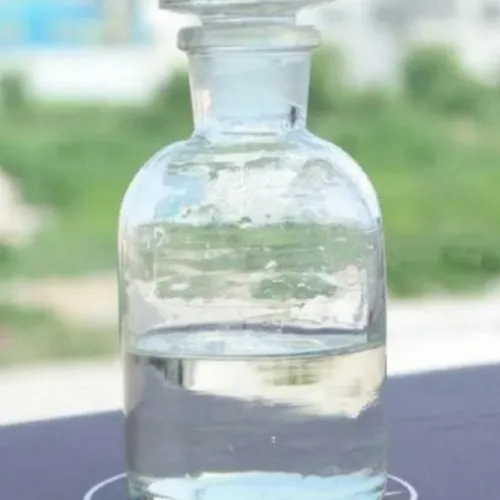Warning: Undefined array key "title" in /home/www/wwwroot/HTML/www.exportstart.com/wp-content/themes/1198/header.php on line 6
Warning: Undefined array key "file" in /home/www/wwwroot/HTML/www.exportstart.com/wp-content/themes/1198/header.php on line 7
Warning: Undefined array key "title" in /home/www/wwwroot/HTML/www.exportstart.com/wp-content/themes/1198/header.php on line 7
Warning: Undefined array key "title" in /home/www/wwwroot/HTML/www.exportstart.com/wp-content/themes/1198/header.php on line 7
- Afrikaans
- Albanian
- Amharic
- Arabic
- Armenian
- Azerbaijani
- Basque
- Belarusian
- Bengali
- Bosnian
- Bulgarian
- Catalan
- Cebuano
- China
- China (Taiwan)
- Corsican
- Croatian
- Czech
- Danish
- Dutch
- English
- Esperanto
- Estonian
- Finnish
- French
- Frisian
- Galician
- Georgian
- German
- Greek
- Gujarati
- Haitian Creole
- hausa
- hawaiian
- Hebrew
- Hindi
- Miao
- Hungarian
- Icelandic
- igbo
- Indonesian
- irish
- Italian
- Japanese
- Javanese
- Kannada
- kazakh
- Khmer
- Rwandese
- Korean
- Kurdish
- Kyrgyz
- Lao
- Latin
- Latvian
- Lithuanian
- Luxembourgish
- Macedonian
- Malgashi
- Malay
- Malayalam
- Maltese
- Maori
- Marathi
- Mongolian
- Myanmar
- Nepali
- Norwegian
- Norwegian
- Occitan
- Pashto
- Persian
- Polish
- Portuguese
- Punjabi
- Romanian
- Russian
- Samoan
- Scottish Gaelic
- Serbian
- Sesotho
- Shona
- Sindhi
- Sinhala
- Slovak
- Slovenian
- Somali
- Spanish
- Sundanese
- Swahili
- Swedish
- Tagalog
- Tajik
- Tamil
- Tatar
- Telugu
- Thai
- Turkish
- Turkmen
- Ukrainian
- Urdu
- Uighur
- Uzbek
- Vietnamese
- Welsh
- Bantu
- Yiddish
- Yoruba
- Zulu
Gus . 08, 2024 06:40 Back to list
Using Petroleum Jelly Effectively to Promote Healing and Protect Cuts and Minor Injuries
Petroleum Jelly for Cuts A Comprehensive Guide
Petroleum jelly, commonly known by the brand name Vaseline, is a versatile and effective substance that has been widely used for various skin care and healing purposes since its discovery in the 19th century. While it is often associated with lip care and skin moisturization, petroleum jelly can also play a crucial role in the treatment of minor cuts and abrasions. In this article, we will explore the benefits, applications, and precautions of using petroleum jelly for cuts.
What is Petroleum Jelly?
Petroleum jelly is a semi-solid mixture of hydrocarbons obtained from petroleum. Its smooth texture and moisturizing properties make it a popular choice in cosmetics and skin care products. The jelly acts as an occlusive agent, meaning that it forms a protective barrier over the skin. This barrier helps to lock in moisture and create an ideal environment for the healing process.
Benefits of Using Petroleum Jelly for Cuts
1. Moisture Retention When applied to a cut, petroleum jelly helps retain moisture in the wound area. This is essential for promoting a healthy healing environment, as studies indicate that wounds heal better when they are kept moist.
2. Barrier Protection The occlusive nature of petroleum jelly not only hydrates the wound but also protects it from external irritants, bacteria, and contaminants. By forming a barrier, it reduces the risk of infection and promotes faster recovery.
3. Soothing Effect Petroleum jelly can provide soothing relief to minor skin irritations and can help reduce itching associated with the healing process. Its emollient properties can alleviate discomfort and sensitivity around the wound site.
4. Scar Prevention By maintaining moisture levels and protecting the wound, petroleum jelly can also minimize the likelihood of scarring. Keeping a wound hydrated reduces the chances of it closing with uneven skin, which can lead to prominent scars.
How to Use Petroleum Jelly for Cuts
Using petroleum jelly for minor cuts is straightforward. Here are the steps to follow
petroleum jelly for cuts

1. Clean the Wound Start by gently washing the cut with mild soap and water to remove any dirt and debris. Pat the area dry with a clean towel.
2. Apply Petroleum Jelly Take a small amount of petroleum jelly and apply it directly to the clean wound. Ensure that the jelly adequately covers the entire area to create a protective barrier.
3. Cover if Necessary Depending on the location and severity of the cut, you may choose to cover it with a sterile bandage to provide additional protection. This can be especially important for wounds on areas prone to friction or exposure.
4. Reapply as Needed Reapply petroleum jelly at least once a day or more frequently if the area becomes dry or if you notice the bandage sticking to the wound. Regular application ensures the wound remains moist and protected.
Precautions
While petroleum jelly is generally safe for treating minor cuts, there are a few precautions to keep in mind
- Avoid Deep Wounds Petroleum jelly is best suited for minor cuts and abrasions. Do not use it on deep, puncture, or bleeding wounds without consulting a healthcare professional.
- Allergy Check Although rare, some individuals may have a sensitivity or allergic reaction to petroleum jelly. Conduct a patch test on a small area of skin before extensive use.
- Infection Signs If you notice increased redness, swelling, or discharge from the cut, discontinue use and seek medical attention, as these may be signs of infection.
In conclusion, petroleum jelly can be an effective and inexpensive option for managing minor cuts. Its moisture-retaining and protective properties can enhance the healing process and minimize the risk of scarring. As with any treatment, it's essential to monitor the wound and seek professional advice when necessary. With thoughtful application, petroleum jelly can be a valuable addition to your first-aid toolkit.
Latest news
-
Certifications for Vegetarian and Xanthan Gum Vegetarian
NewsJun.17,2025
-
Sustainability Trends Reshaping the SLES N70 Market
NewsJun.17,2025
-
Propylene Glycol Use in Vaccines: Balancing Function and Perception
NewsJun.17,2025
-
Petroleum Jelly in Skincare: Balancing Benefits and Backlash
NewsJun.17,2025
-
Energy Price Volatility and Ripple Effect on Caprolactam Markets
NewsJun.17,2025
-
Spectroscopic Techniques for Adipic Acid Molecular Weight
NewsJun.17,2025

